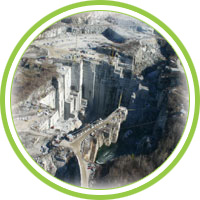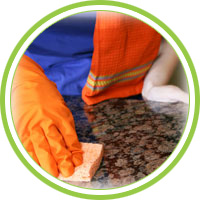 Q: Where is Natural Stone found?
Q: Where is Natural Stone found?A: They are found in almost all the countries, continents and subcontinents across the world. Some stones are specially found in some areas only. Generally, they can be found in river & sea beds, underneath the earth, and mountains. They are formed due to the collection of sediments over a long period of time.
Q: How long Natural Stones can last?
A: It can last for years; the only thing is that they need proper care and timely maintenance.
Q: What does "quarrying" stands for?
A: In simple words, the word quarry stands for mines. It is the place where a particular natural stone is found in abundance. The process of extracting it from its natural reservoir is known as quarrying, mining or stone extraction.
Q: Does the engineered stone and natural stone are same?
A: The answer is an obvious “no”, natural stone as the name suggests are the stones that are formed naturally beneath the earth. It takes millions of years for the formation of such stones, heat and pressure plays a vital role. The engineered stones are manmade stones. They are produced in factories where stones are crushed then coupled together using acrylic resins and polyester.
Q: What is the reason that the texture and color of stones differ?
A: Since it is a nature’s product, it is subject to disparity. Its constitutes, like mineral deposit and veining will have a strong effect on every single piece, so two natural stones never have the same design, color and pattern.
Q: What’s the rough weight of a pallet of natural stone?
A: It can anywhere between 3000-4000 lbs.
 Q: Is it possible to use natural stones for paving indoors?
Q: Is it possible to use natural stones for paving indoors?A: The answer is “yes”, but one should make sure of a proprietary sealant so that there is protection from staining of surface and dusting.
Q: What does the word “remnant imply” in natural stone industry?
A: It means the pieces that are leftover from the previous job. For instance, you have laid marbles in your room. According to the size of the room and pattern you are laying, there would be a lot of small pieces of marbles left after cutting. They are called remnants; remember it can be of any natural stone. You can sell these remnants at less price, or you can combine with other natural stones and lay them in the balcony or porch area in attractive designs. You can also make fireplace hearths or vanity tops depending on the type and nature of the natural stone.
Q: Is it possible to have curves and arches in countertops?
A: The answer is yes, the natural stones can be easily formed as per your specification.
Q: How Granite has to be cleaned?
A: Never use harsh material such as scouring powder, metal brushes, and metal scrubber for cleaning granite surface. In fact, use of chorine based cleaners, bleaches, concentrated disinfectants and alkalis should be strictly avoided. Use warm water along with mild detergent, after cleaning leave it for drying to avoid watermarks.
Q: Does the “shining surface” lose its shine?
A: Well the answer is “yes”, for areas like kitchen, it’s natural, you may find dull patches where it is subject to high wear, but with renovation you can easily restore the shining of the surface.
Q: What Cultured stone stands for?
A: Generally, it is a man made product; it has been in existence since last 45 years. It comes up in an array of attractive textures, designs and colors. It weighs less than the natural stones. A cultured stone easily maintains its natural beauty and aesthetic appeal for a long time.


